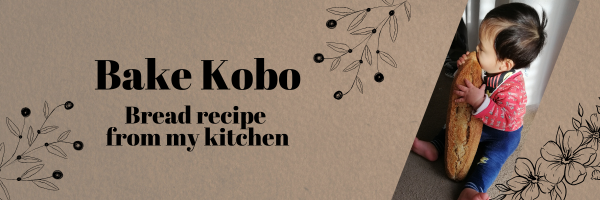I visited my friend's place, and I had small bread making class there.
We made Melon pan. It was my Japanese friend's request.
My friends and kids enjoyed fun baking.
And I made Turkish bread. It is also called Turkish ''pide''. I was wondering what is ''pide''.
Is it word for bread in Turkish? No, bread is ''ekmek''.
I found it out, ''pide'' means ''pizza'' !!!!! It sounds similar word. Now, it is connected.
Turkish pide is traditionally cooked in hot cray ovens. It makes crispy crust and chewy crumb.
But of course, it is rarely to be in home kitchen. Use oven with high temperature, instead of the cray oven.
Turkish bread
Final dough
100g mature 100% hydration sourdough starter
250g high grade flour
6g Salt
20g Olive oil
150cc water
Topping
Egg wash
Olive oil
White sesame seeds
Black sesame seeds
1. In a mixing bowl, combine the final dough ingredients. Knead it with dough hook for 8 minutes at low speed.Then kneed it for 3 minutes at high speed.
2. Put the dough into the lightly oiled container with cover. Let it proof for 6 - 8 hours until it becomes double size. . Fold it every 1 hour for 3 times.
3. Prepare baking paper on the baking tray.
Pour the dough on the floured counter. Shape it into rectangle gently. Transfer it on the baking tray.
4. Proof it for 40 minutes at warm place.
5. Preheat oven at 230℃.
6. Brush egg wash and olive oil on top.
Sprinkle white and black sesame on top. Poke it with your fingers.
7. Bake it at 220℃ for 18-20 minutes until it becomes golden brown.
8. Cool it down.
It is placed at Yeastspotting.



















































